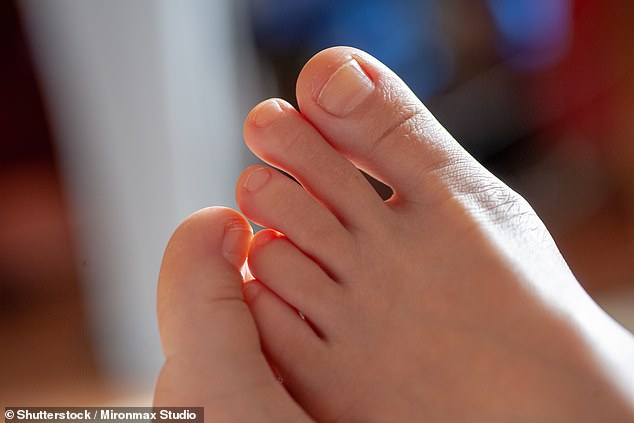Two months ago, my left toenail fell off in bed, and shortly after, my right toenail fell off. I was wondering what could be the cause? I am 70 years old and otherwise healthy. Will cosmetic nails affect growth?
Name and address provided.
Dr. Scurr responds: The spontaneous loss of a nail is known as onycholysis: the nail of the big toe is the most commonly affected and its regeneration takes approximately 18 months; nothing can speed this up.
It is usually caused by repeated minor trauma, often due to the impact of footwear; for example, regularly wearing shoes that are too tight or ill-fitting.
It is also increasingly caused by long distance running. In this case, the repeated stress of the shoe rubbing against the toes damages the blood vessels that feed the nail, which “dies”, turns black and then falls off.
Other causes include fungal infections: here the nail first becomes discolored (usually yellowish) and thickens, before falling off, but you don’t mention this in your longer letter.

Wearing shoes that fit your feet rather than too tight or small is a good way to keep your toenails healthy.
Another possible cause is having constantly wet feet.
Sometimes, nail loss can be caused by certain medications such as some types of antibiotics (tetracyclines, quinolones); or clofazimine (used to treat leprosy); or zidovudine (HIV treatment) after exposure to light, because in all of these cases the medication affects the nail plate, the tissue bed on which the nail sits.
It seems like your shoes are the most likely cause, but rest assured, your toenail will grow back and in less than two years it will look normal.
Meanwhile, wearing a false nail should not affect the growth of the nail, which may continue under the artificial one.
I have had serious back problems for 11 years. Prescription medications, including gabapentin, have provided some relief, but should I ask if I can have a spinal cord stimulator? I also understand that this procedure is not covered by the NHS.
Paul Fareham, Isle of Wight.
Dr. Scurr responds: Eleven years is a long time to live with chronic back pain, so I understand your plight. According to official guidelines, spinal cord stimulation (SCS) is a treatment option for patients with back pain who are still experiencing problems after six months of other suitable treatment, such as the gabapentin they have been prescribed.
The spinal cord stimulator is a pacemaker-like device that is implanted under the skin in the back, from where thin wires pass to the space between the spinal cord and the vertebrae.
Whenever the patient feels pain, they can use a remote control to activate the device, sending electrical impulses to the spinal cord with the goal of interrupting or blocking pain signals between the lower back and the brain.
Patients can adjust the stimulation level depending on the degree of pain they experience.
Several SCS devices have been approved, including ReActiv8 (the model you ask about in your longer letter), and are available on the NHS.
Typically, patients first receive a temporary implant to evaluate whether a permanent implant is likely to be successful.
Benefits vary from person to person, although treatment can be effective: A study published in the journal Pain in 2021 found that more than 60 percent of EME patients experienced a pain reduction of 50 percent or more, and almost 80 percent were satisfied with the treatment.
There are some restrictions once you have received an SCS implant, including avoiding hot tubs and swimming (although showering and bathing are okay). As with any implantable device, there is a small risk of infection causing the device to need to be removed.
But overall, there is reason to be optimistic, just in case the pain clinic you were referred to decides this is right for you.
In my opinion: the saboteur lurking in skin products
I want to point out a strange phenomenon I have observed recently: patients develop sudden, generalized facial redness.
The rash is painful and itchy, the skin is soft and smooth, with a touch of swelling around the eyelids.
All patients have reported that their skin feels tight, an indication of swelling within the superficial layers.
I suspect this response is an allergy to something applied to the skin, namely methylchloroisothiazolinone, a preservative used in many skin care products, including shampoo, sunscreen, blush, baby wipes, and body washes. Prevent fungi and bacteria from growing in the product.
The chemical is an additive which is now subject to controls as to the permitted concentration, but despite this there have recently been reports of people becoming sensitized to it, leading to an allergy.
The lesson is to always check the label of this substance with that long name or with a brand name, Kathon.
If you suffer from what you suspect is an allergic response, wash your skin carefully and then apply an emollient such as E45 and seek medical attention if the problem does not begin to subside within a few hours (although it may take two to three days to clear up). ). completely).
